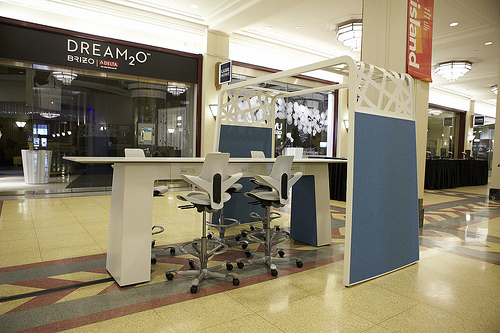Every idea has to start somewhere. In that sense, every furniture and product design begins its life as a “concept piece.”
But Joey Ruiter of Jruiter + Studio, an izzy+ product design partner, says there’s a big difference between working on concepts behind closed doors and getting them out where they can get some air and stir up a response.
“When I design there’s always going to be a concept stage of some sort, but something great happens when you get a chance to show the concepts to the public,” Ruiter says. “People are more likely to share their input and opinions when they know something hasn’t been finalized yet. They have a stake in it and know they can impact the final product. For a designer, that’s open-source learning at its best.”
That’s exactly the process Ruiter and izzy+ founder Chuck Saylor decided to follow when they set out to design the Nemo Bar and Trellis. The design team was able to absorb and process two years’ worth of feedback before finalizing the design for production: First, the concept pieces were introduced at NeoCon 2010, then tweaked and brought back for more feedback in 2011. The polished form was presented at NeoCon 2012, where it took a NeoCon Gold Award.
“It all goes back to my belief that being transparent about idea-sharing—especially in a very spontaneous setting rather than a controlled one—is an incredibly important part of the creative process,” says Saylor. “The broader the feedback is and the more viewpoints you get, the better your final design ends up being.”
Ruiter agrees. Transparency in the design process can feel risky, but true creativity and innovation require going out on some limbs.
“If you know you’re going to take a design and make it into a product right away, it’s a lot harder to do something really new and innovative,” says Ruiter. “You end up playing it too safe and take fewer risks when you know exactly what someone wants you to design, and you’re on a deadline to get it into production.”
In the case of the izzy+ Nemo line of concept products, Saylor’s challenge to Ruiter was to imagine and help shape the future of work, at a moment when workers are rapidly becoming more mobile and collaborative than ever. To really get out in front of trends requires a sense of creative freedom as well as engagement in a broader conversation. Ruiter says that’s because people usually only think they know what they want or need. Often there’s a better, more forward-thinking solution out there, if designers are given the freedom to dream and explore.
“As humans, our imaginations tend to be so limited unless we really push them,” Ruiter says. “To see a company like izzy+ let designers like me and Chuck (Saylor) and Allison (Roon) experiment with concepts is great.”
And sometimes, bringing new ideas from concept-to-market means breaking out of existing industry grooves and expectations. It might even mean a clear category doesn’t yet exist for this new thing you’ve made.
“I think it’s great that [the Nemo Bar and Trellis] got a [NeoCon] Gold [Award] in the Systems category,” Ruiter says. “It’s funny and ironic, because it’s so different from a furniture system, but there wasn’t really a category for it. What the award says to me is that interior designers are ready for something different.”
Clearly they are. The feedback Saylor and Ruiter heard most often about the Nemo Bar and Trellis was along these lines: “We want these—how fast can you produce them?” Well, how about now? izzy+ began taking orders for the Nemo Bar in September 2012, and the Trellis is in development for a fourth quarter launch. In other words, the time to start working and learning in new ways is now. Thanks for being a part of the conversation as we design the future!
The Nemo Bar & Trellis as a touchdown/charge up station in the Merchandise Mart lobby, NeoCon 2012.
.



